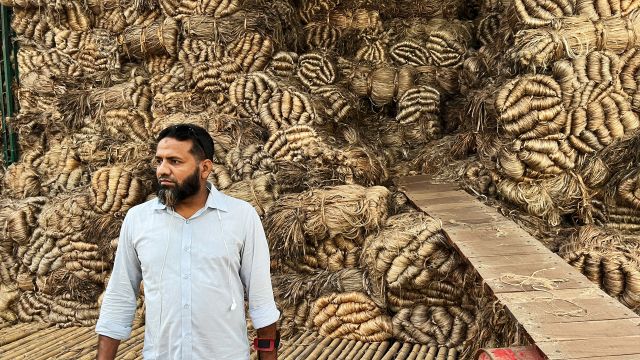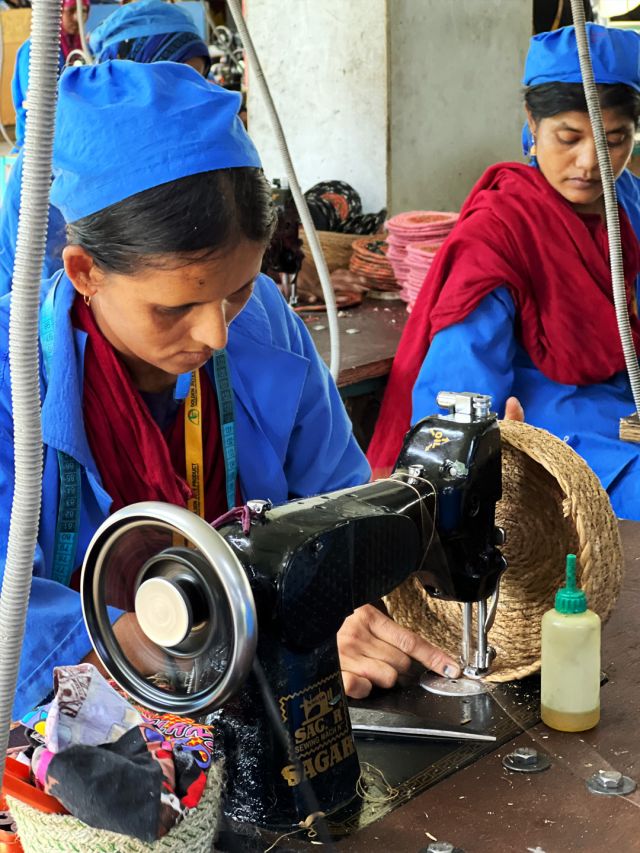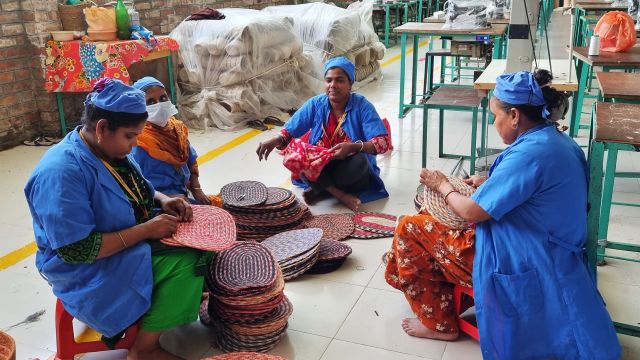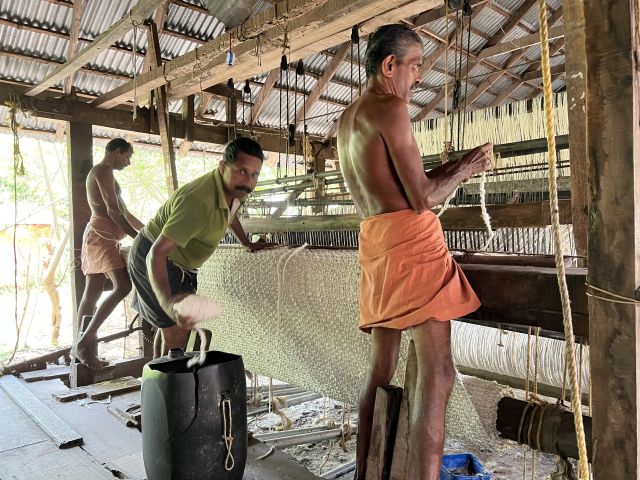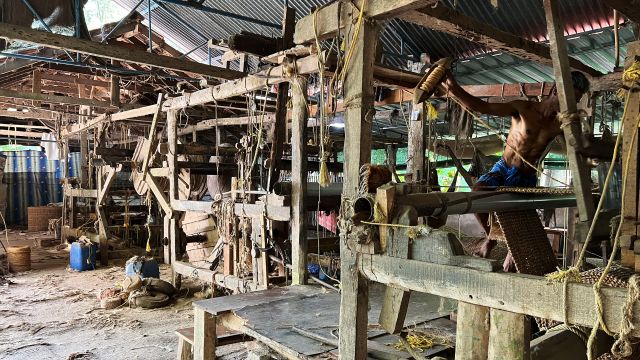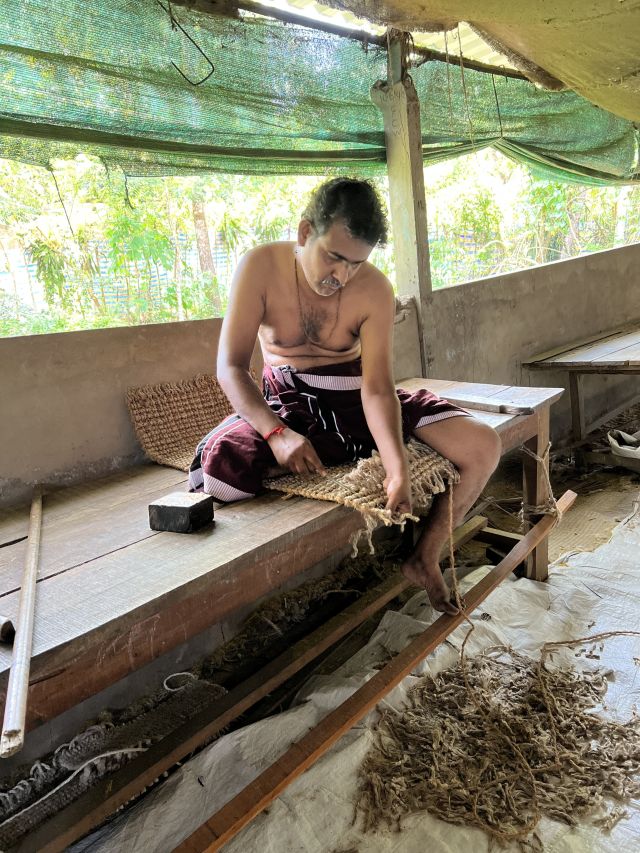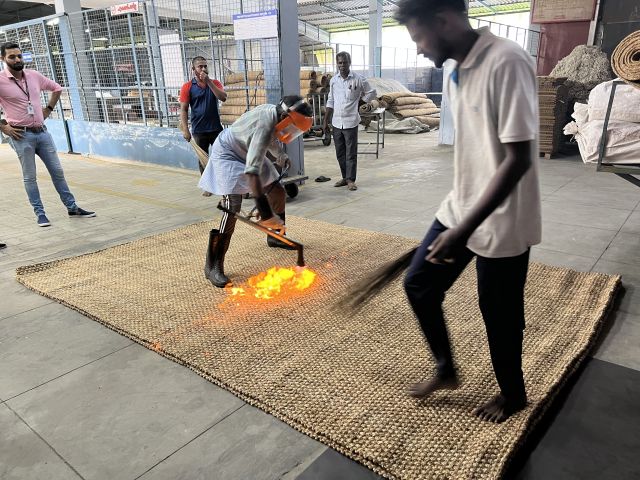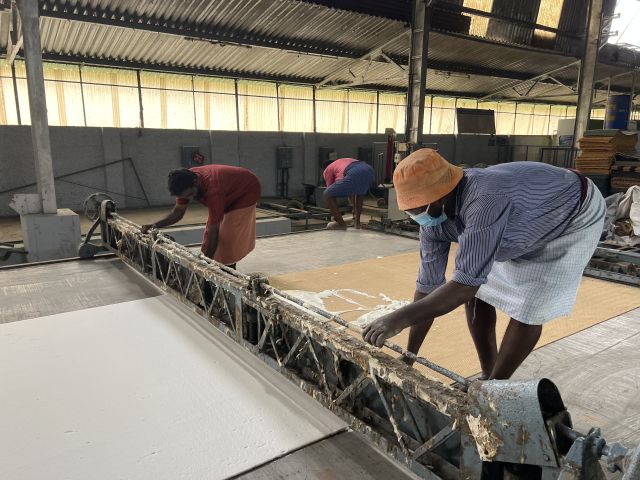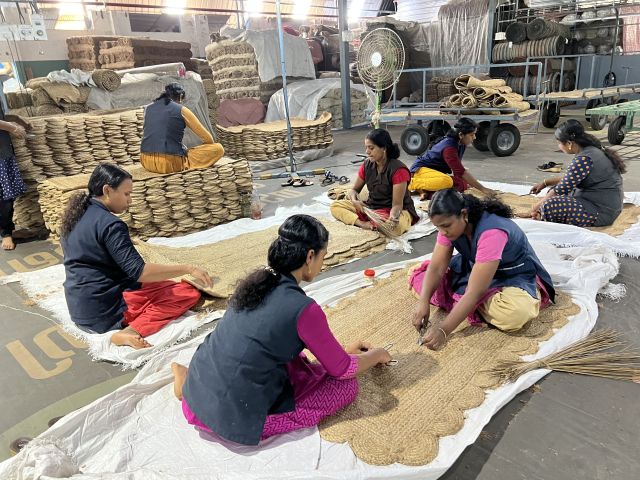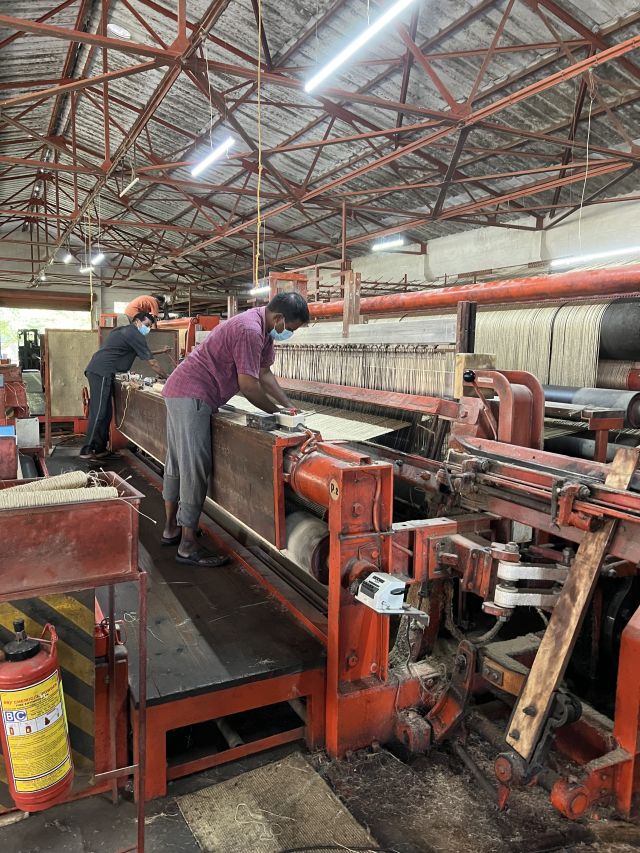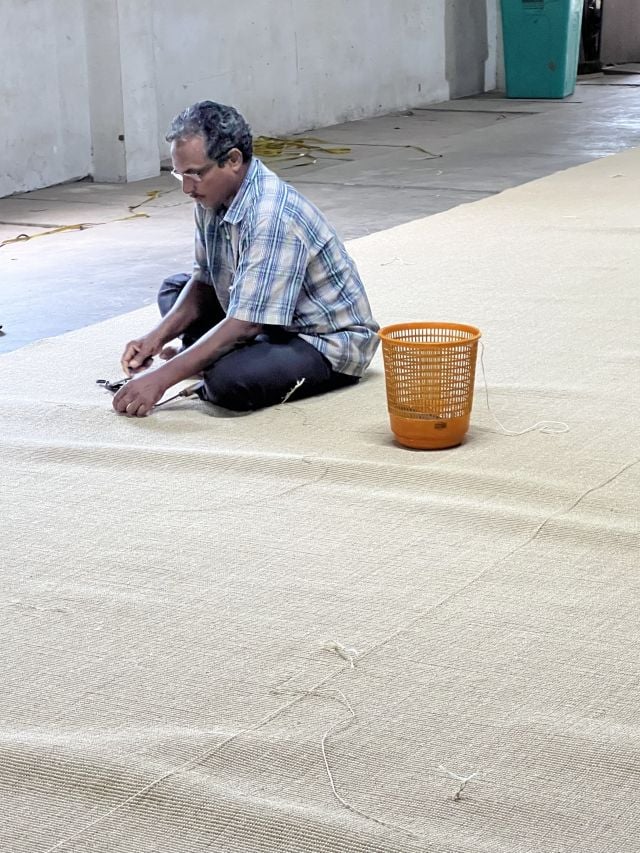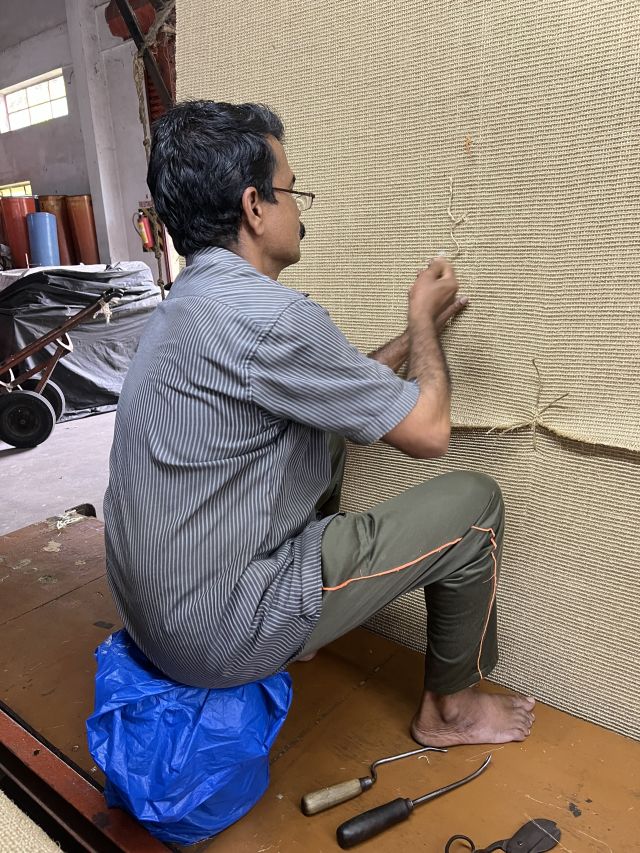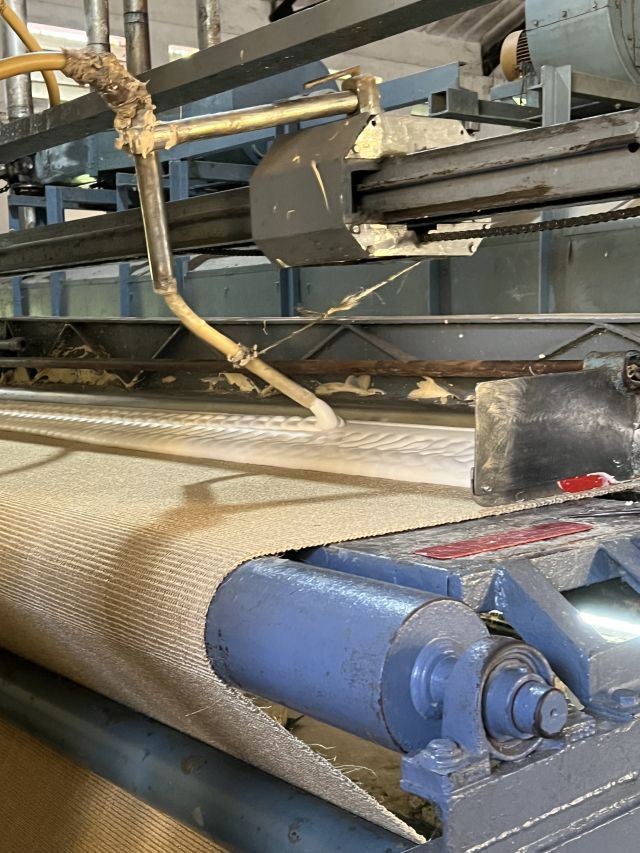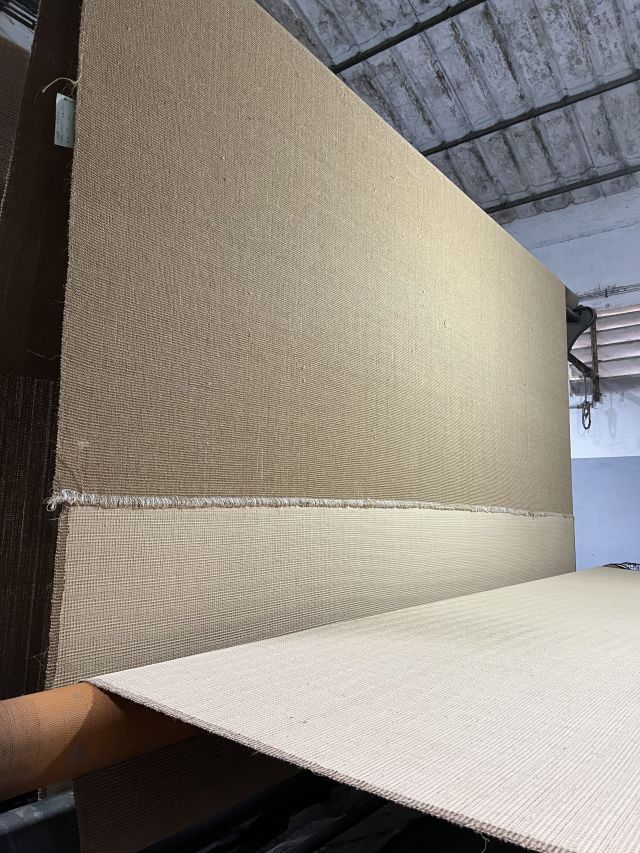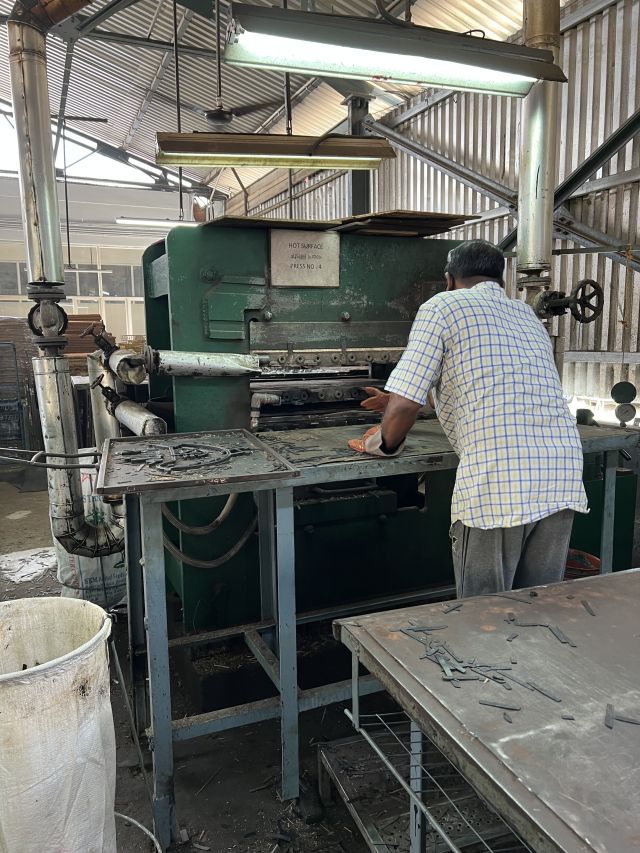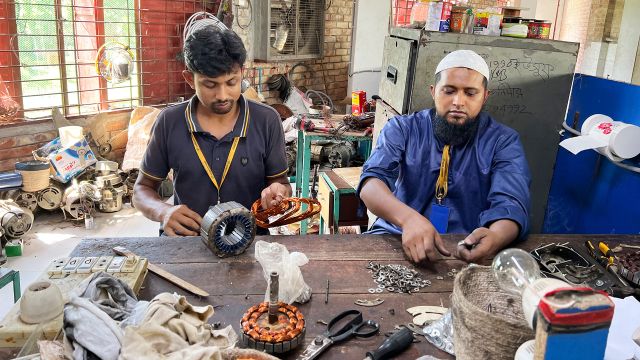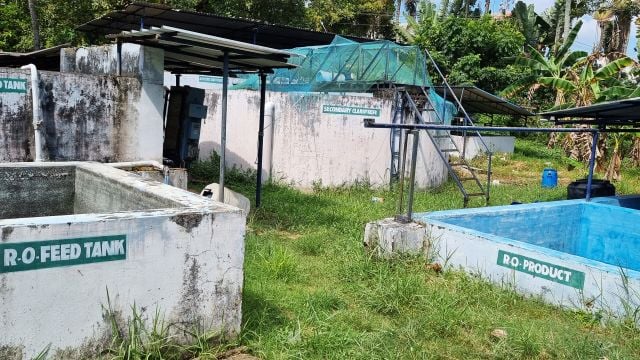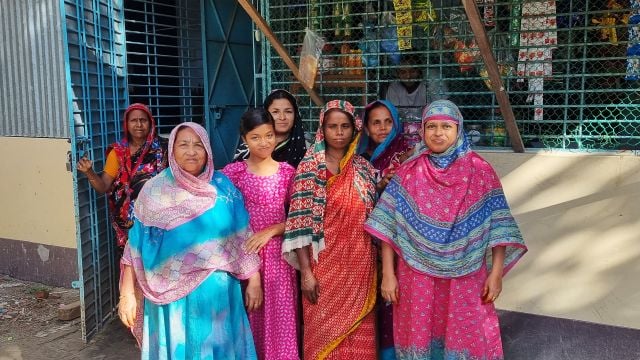Our manufacturing in Bangladesh
In Bangladesh, our placemats and baskets are made from seaweed and jute. The products are made by hand using a sewing machine or just needle and scissors. The women and men who work in the factory are enormously skilled with the sewing machine and a placemat or basket can be produced in just a few minutes. Careful quality control of each product is usually carried out by women with long experience in the craft.
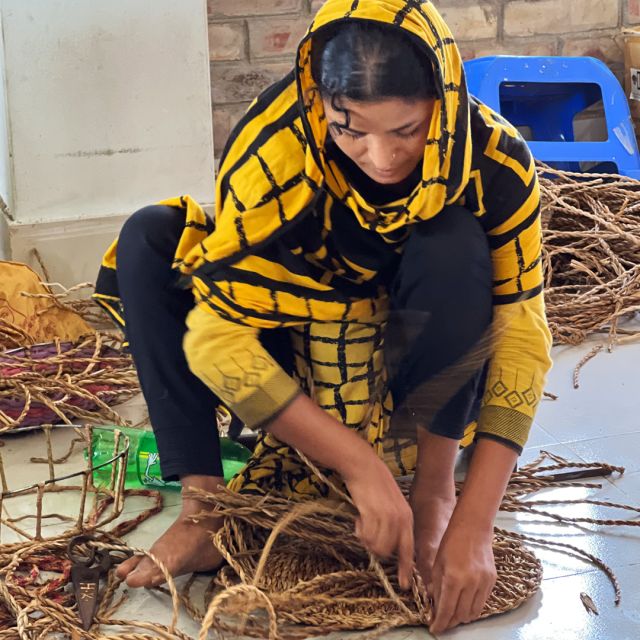
Coarse seaweed tablets are braided by hand using a needle and scissors.
Our manufacture of carpets in India
Almost all of our carpets are manufactured in India, both jute and rubber doormats as well as sisal carpets. All of our unique jute rugs are hand woven from machine or hand spun jute yarn. Our durable sisal rugs are machine woven on large automated factory looms.
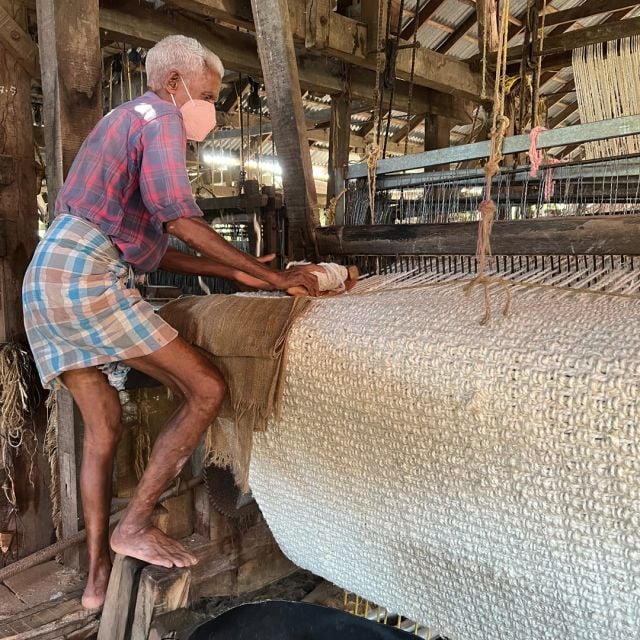
A jute rug grows on a traditional handloom
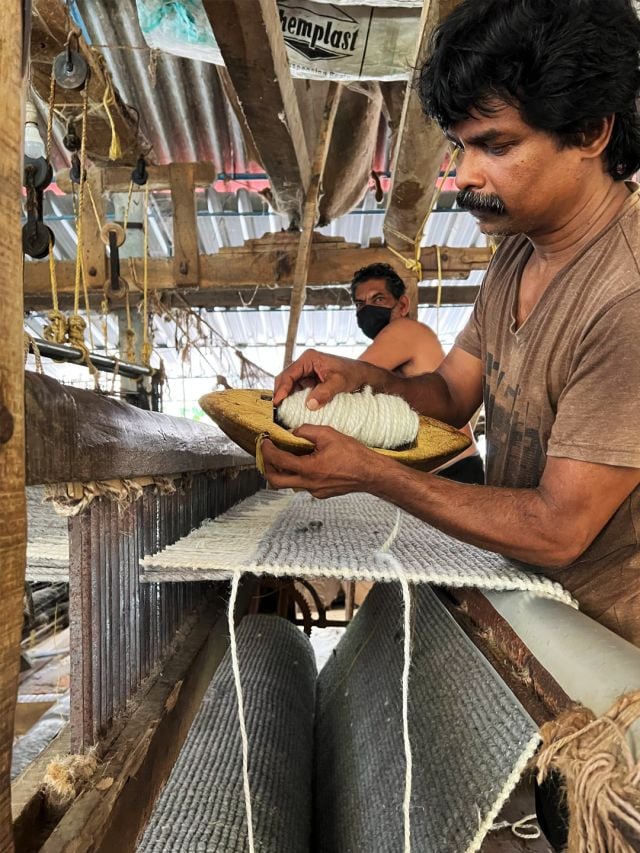
Shuttle is filled with jute twine
